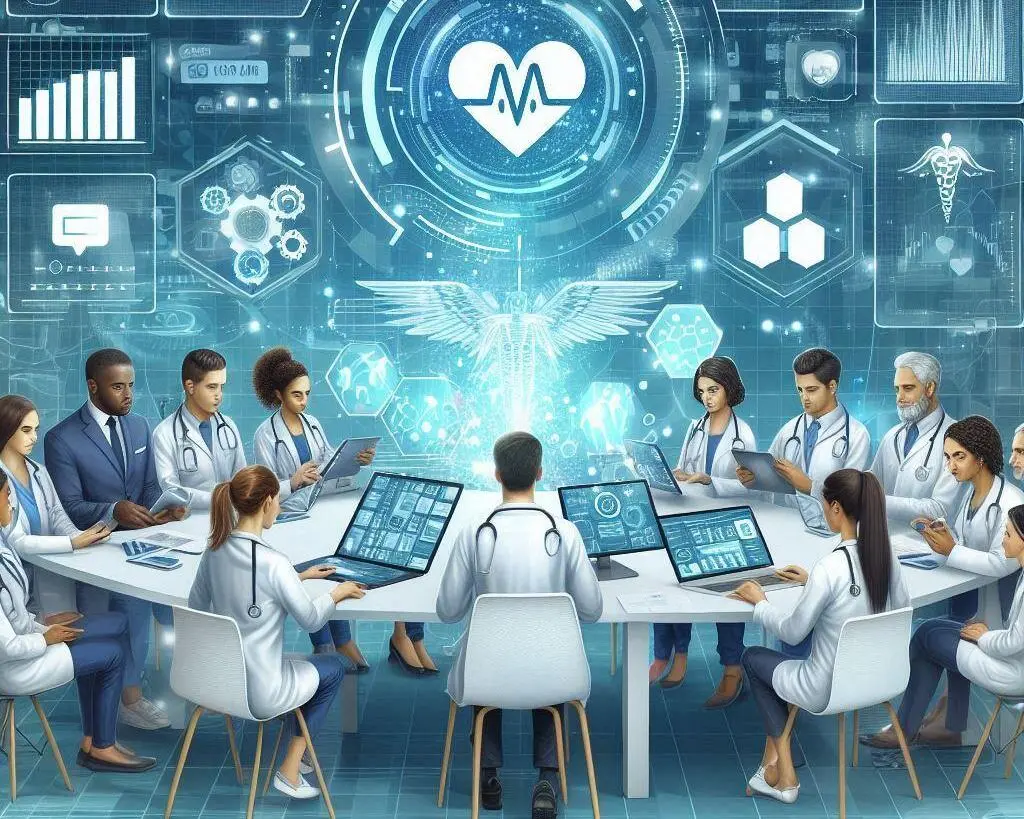What Steps Modern Healthcare Take Towards Data-Driven Efficiency
Healthcare is evolving fast. Data-driven efficiency is transforming how providers operate. You see, using analytics like financial sectors boosts treatment outcomes. With tools that enhance decision-making, you gain insights to improve patient care.
The challenge lies in implementing these technologies effectively. So, let’s explore how modern healthcare leverages data to optimize processes and deliver better results for patients and providers alike.
Stick around as we unpack these innovative strategies shaping the future of health management.

Harnessing Predictive Analytics for Patient Outcomes
Leveraging predictive analytics, healthcare practitioners are now crafting superior patient experiences. It’s a growing trend: the use of deep data insights for anticipating the needs of patients and optimizing hospital procedures. Through a careful examination of past treatment data, medical institutions spot patterns that sharpen decision-making and minimize missteps.
This is where technology like the Electronic Medication Administration Record system comes into play. eMAR facilitates real-time access to medication data, ensuring healthcare professionals have accurate information at their fingertips. Such streamlined information flow reduces delays and enhances safety during medication administration.
Ultimately, leveraging predictive analytics alongside eMAR technology allows providers to create a proactive approach to delivering care, fostering better health results for patients while optimizing operational efficiency in the process.
The Role of Interoperability in Streamlining Data Access
Interoperability stands as the cornerstone of fully realized data-driven healthcare solutions. Varied systems and applications can seamlessly interact, setting the stage for a cohesive patient care strategy.
Here’s how interoperability enhances efficiency:
- Improved Data Sharing: Health providers gain access to complete patient records, leading to more informed decisions.
- Reduced Redundancies: With better communication between systems, unnecessary tests and procedures decrease, saving time and resources.
- Enhanced Collaboration: Healthcare teams work together effectively when they share accurate data across platforms.
eMAR technology exemplifies this principle by connecting various departments involved in medication administration.
A cohesive information network not only improves safety but also drives better treatment outcomes through faster response times and coordinated efforts among healthcare professionals.
Boosting Patient Engagement with Analytic Insight
In the modern healthcare system, drawing patients into an active role is paramount, and analytic insight is a vital tool in this mission. Armed with analytics, healthcare professionals can design patient experiences that resonate with the distinct needs of each individual.
This strategy serves a dual purpose: it enlightens and simultaneously prepares patients to actively manage their health.
Innovative platforms such as patient portals and apps lay out the welcome mat for individuals to access their health data with ease, keeping them informed about upcoming consultations and medication regimes. This direct line encourages patients to adopt a hands-on approach to their healthcare journey.
Coupled with systems like the Electronic Medication Administration Record, clinicians are poised to offer prompt notifications regarding medication adjustments or dispensing details. Transparency in these interactions builds trust between patient and practitioner, paving the way for greater compliance and superior health outcomes.
Integrating Artificial Intelligence in Clinical Decision-Making
AI is remolding the landscape of clinical decision-making, offering healthcare professionals potent instruments that amplify their expertise. AI delves into the data abyss to detect patterns and propose treatments tailored for each patient, thereby alleviating the cognitive burden on clinicians and refining the accuracy of their diagnoses.
When AI meshes with medical workflows, it also smooths out the creases in administrative tasks, allowing practitioners more time to dedicate to direct patient care. Take, for instance, how AI-driven analytics can spot red flags for potential medication errors within platforms such as the Electronic Medication Administration Record (eMAR).
The seamless incorporation of this technology informs sharper decisions and paves the way for preventative patient care strategies. As AI continues to evolve, its increasingly significant role in developing bespoke treatment plans and boosting healthcare efficiency is undeniable.
Check Out: Fintechzoom NIO Stock – An In-Depth Analysis
Overcoming Barriers to Effective Data Implementation
Implementing data-driven solutions in healthcare presents challenges, but addressing these barriers is crucial for success.
Key obstacles include:
- Legacy Systems: Older technologies often lack interoperability and hinder seamless data exchange.
- Training Gaps: Staff may struggle with new tools if proper training isn’t provided, leading to inefficiencies.
- Data Privacy Concerns: Ensuring patient information remains secure can create hesitation among providers.
However, leveraging smart technology improves document accuracy and enhances the overall quality of care. Platforms such as eMAR refine operational flows and cut down on medication dispensing mishaps.
By zeroing in on education, modernizing systems, and placing a premium on security protocols, medical institutions can clear these obstacles and tap into the complete suite of benefits that come with data-driven optimizations.
Navigating the Future: Leveraging Data in Healthcare
The progression of healthcare hinges on adopting innovations powered by data, altering the fabric of patient care. Infusing sophisticated technologies and detailed analytics into routine operations gives practitioners the tools to improve patient results and streamline processes.
The prospects for anticipatory insights and fluid exchange of information are boundless. Staying ahead requires a focus on teamwork, in-depth training, and robust security measures to confront current obstacles with determination.
Commitment to these directives lays down a foundation for a thriving future – one where all parties gain from an enhanced healthcare system built for excellence.
